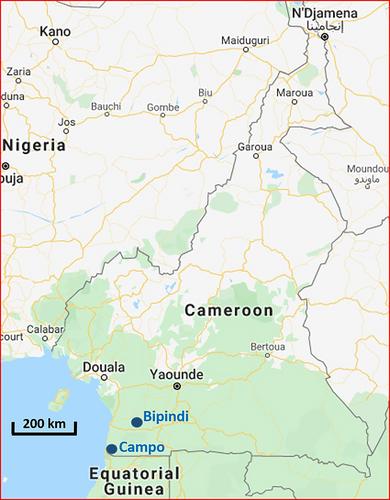自然感染刚果锥虫的野生采采蝇(舌蝇)中肠蛋白丰度。
IF 1.6
3区 农林科学
Q2 ENTOMOLOGY
引用次数: 0
摘要
Tsetse蝇(Glossina spp.)是非洲锥虫的主要媒介,可引起人类或动物非洲锥虫病(HAT或AAT)。已经开发了几种控制该疾病的方法,其中包括抗媒介不育昆虫技术。另一种抗媒介策略可能包括通过迄今尚未确定的调节因子(基因、蛋白质、生物途径等)控制苍蝇的媒介能力。本工作旨在评估刚果锥虫自然感染的野生舌蝇(触须舌蝇)中肠中的蛋白质丰度。感染和未感染的苍蝇在喀麦隆南部的两个HAT/AAT病灶中取样。解剖后,将感染寄生虫的苍蝇肠道的蛋白质组与未感染苍蝇的蛋白质组进行比较,以确定与感染相关的定量和/或定性变化。在丰度增加的蛋白质中,果糖-1,6-双磷酸酶、膜运输蛋白、死亡蛋白(或凋亡蛋白)和SERPINs(丝氨酸蛋白酶抑制剂,被认为是锥虫体毒力因子的酶)显示出最高的丰度增加。本研究,以及以前对采采蝇肠道提取物中锥虫分泌组的蛋白质组学和转录组学研究,为进一步研究哺乳动物宿主免疫或通过准转基因方法修饰蝇载体能力提供了数据。本文章由计算机程序翻译,如有差异,请以英文原文为准。

Protein abundance in the midgut of wild tsetse flies (Glossina palpalis palpalis) naturally infected by Trypanosoma congolense s.l.
Tsetse flies (Glossina spp.) are major vectors of African trypanosomes, causing either Human or Animal African Trypanosomiasis (HAT or AAT). Several approaches have been developed to control the disease, among which is the anti‐vector Sterile Insect Technique. Another approach to anti‐vector strategies could consist of controlling the fly's vector competence through hitherto unidentified regulatory factors (genes, proteins, biological pathways, etc.). The present work aims to evaluate the protein abundance in the midgut of wild tsetse flies (Glossina palpalis palpalis) naturally infected by Trypanosoma congolense s.l. Infected and non‐infected flies were sampled in two HAT/AAT foci in Southern Cameroon. After dissection, the proteomes from the guts of parasite‐infected flies were compared to that of uninfected flies to identify quantitative and/or qualitative changes associated with infection. Among the proteins with increased abundance were fructose‐1,6‐biphosphatase, membrane trafficking proteins, death proteins (or apoptosis proteins) and SERPINs (inhibitor of serine proteases, enzymes considered as trypanosome virulence factors) that displayed the highest increased abundance. The present study, together with previous proteomic and transcriptomic studies on the secretome of trypanosomes from tsetse fly gut extracts, provides data to be explored in further investigations on, for example, mammal host immunisation or on fly vector competence modification via para‐transgenic approaches.
求助全文
通过发布文献求助,成功后即可免费获取论文全文。
去求助
来源期刊

Medical and Veterinary Entomology
农林科学-昆虫学
CiteScore
3.70
自引率
5.30%
发文量
65
审稿时长
12-24 weeks
期刊介绍:
Medical and Veterinary Entomology is the leading periodical in its field. The Journal covers the biology and control of insects, ticks, mites and other arthropods of medical and veterinary importance. The main strengths of the Journal lie in the fields of:
-epidemiology and transmission of vector-borne pathogens
changes in vector distribution that have impact on the pathogen transmission-
arthropod behaviour and ecology-
novel, field evaluated, approaches to biological and chemical control methods-
host arthropod interactions.
Please note that we do not consider submissions in forensic entomology.
 求助内容:
求助内容: 应助结果提醒方式:
应助结果提醒方式:


